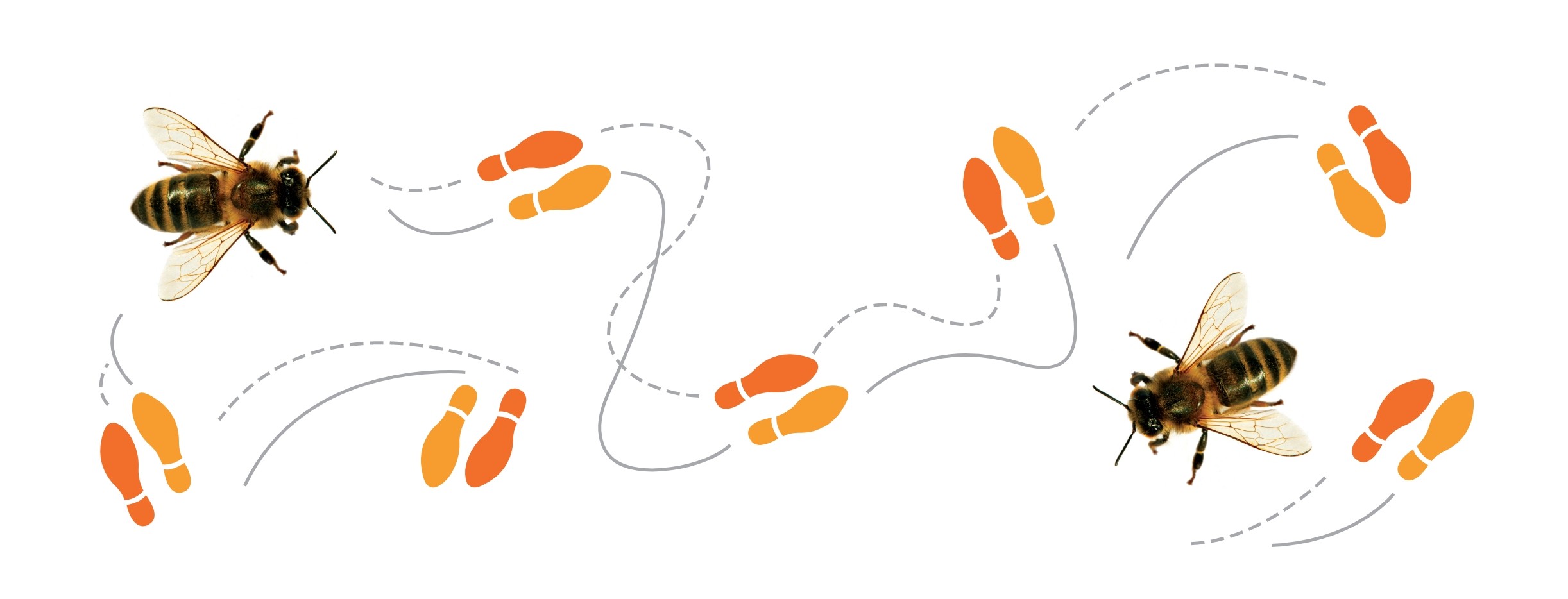Dancing Bees Attract PhD to HMC
When Morgan Carr-Markell, a PhD candidate at the University of Minnesota, arrived at HMC last spring, she brought more than just her teaching skills: Nestled into 10 plastic boxes in the back of her hatchback were approximately 100,000 bees.
Carr-Markell is one of four scholars hired as part of Harvey Mudd College’s Postdoctoral Program in Interdisciplinary Computation, created in response to the increased demand for faculty members who can teach computational skills.
Readers of the HMC Bee Lab blog know the story of the winding mountain road to the apiary, the escaped bees, the fences within fences and the ultimate successful hiving of all those bees by Carr- Markell and her research mentor, biology professor Matina Donaldson-Matasci. Over the summer, Carr-Markell and her research students Maya Abo Dominguez ’22, Fletcher Nickerson ’22 and Giovanni Solis (Upward Bound Program), blogged about their adventures to better understand how honey bees communicate.
“Honey bees have a unique system for finding flowers in the landscape around their hive and optimally dividing their workforce to collect from them,” says Carr-Markell. “This system depends on waggle dance communications where a returning forager conveys the direction and distance of the flowers that she just visited to her sister workers … but current models often cannot predict colony foraging decisions.”
In an attempt to understand the bees’ actions, Carr-Markell and Nickerson filmed the waggle dances performed by workers in nine honey bee colonies. Berlin Paez ’22 mapped nearby patches of California buckwheat, which bees favor, using aerial drone surveys. “We also collected data to help in decoding the distances indicated in our bees’ waggle dances by training bees to visit sugar-water feeders at different distances from their hives and filming those bees after they returned,” says Carr-Markell. “I am working to manually decode those dances now.”
Abo Dominguez worked on a program to automatically decode and map all of the waggle dances from the many hours of video footage. “She made a lot of progress in improving the pre-processing steps and automatically optimizing parameters for different filming conditions and will continue that work in the fall,” says Carr-Markell, adding that Solis manually decoded dances in a number of videos to aid in testing the automatic dance decoding method under different conditions.
Nickerson rewrote an agent-based model of honey bee foraging behavior in Python so that the researchers can determine what rules about recruitment match their experimental results and look at the consequences of those rules for colony foraging success in different environments. “They produced a model that generates a landscape of simulated flowers with simulated bees that collect food from those flowers and communicate with each other about their locations,” says Carr- Markell. “We will continue to add capabilities to the model this fall and perform simulations to compare with our dance/flower mapping results.”
